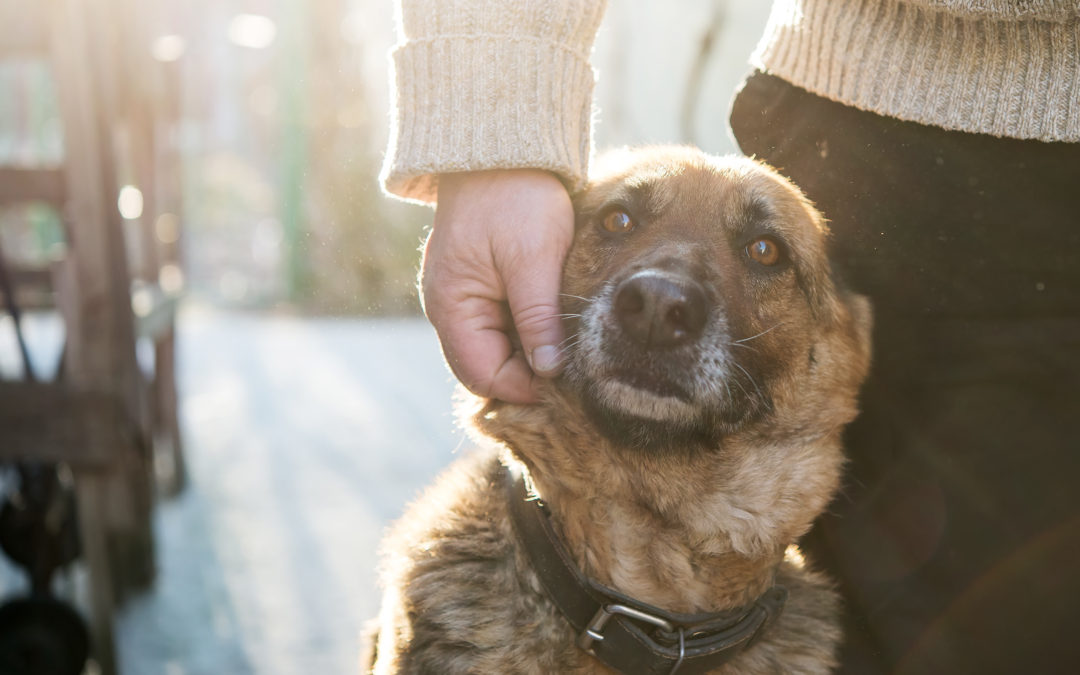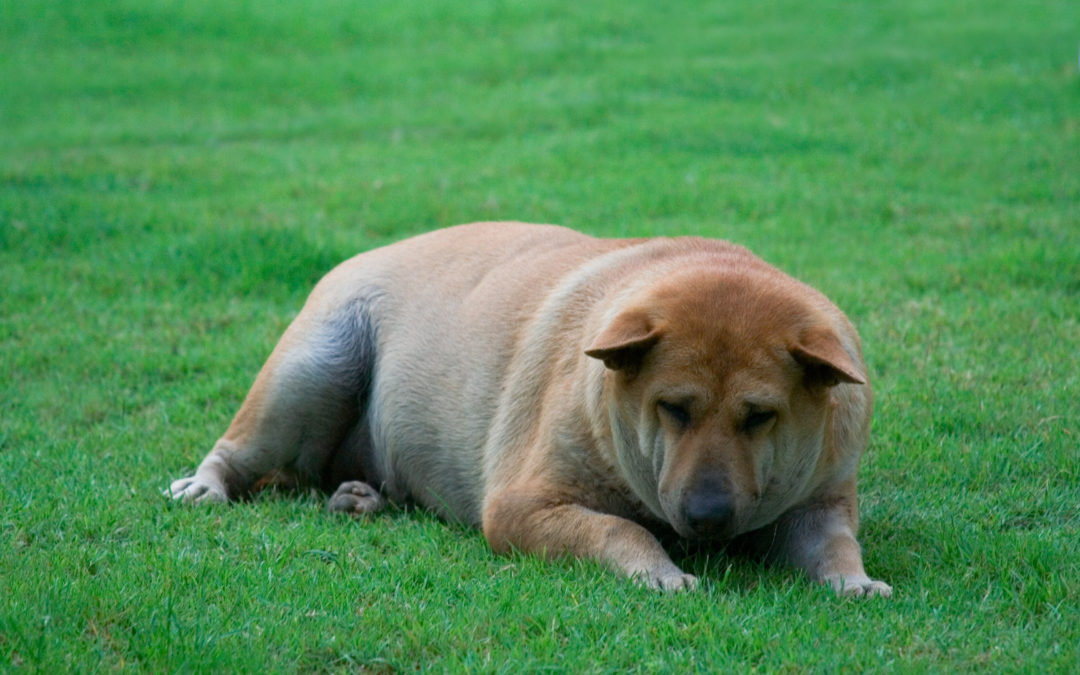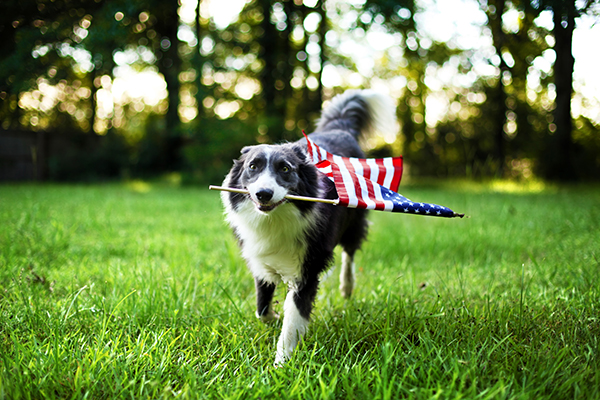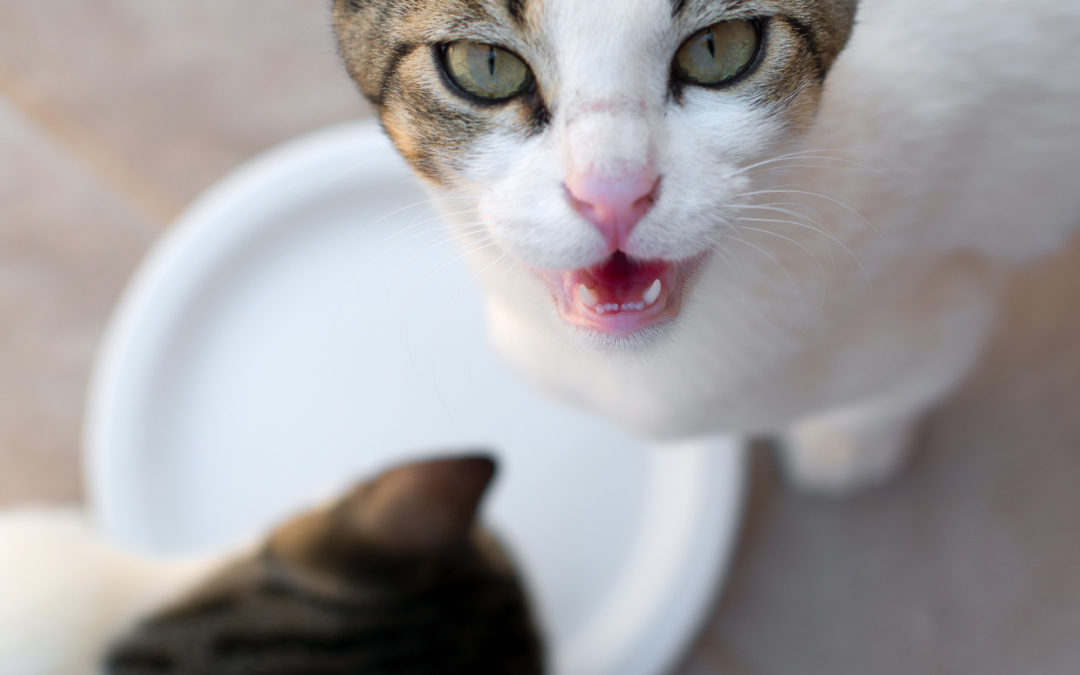
by Admin 2 | Nov 8, 2016 | Cat Health, Dog Health
While it certainly doesn’t feel like Thanksgiving and Christmas are right around the corner, they are! Before you know it, we’ll have a house full of guests, be traveling, or at the very least, we’ll be a little stressed ourselves with all the things that need to be done for the holidays. What does this mean for your pets? As pet parents, we don’t need studies to tell us that our pets can feel emotions (but there are some cool studies about dog’s emotions…check it out!) And just like us, our pets can feel the stress of the holidays and easily become overwhelmed. Here’s some quick tips and products to help you and your pet have a more stress-free holiday!
- Get Ready For Guests – If you’re planning on having guests over during the holidays, a refresher course in manners is a good idea. Excited dogs can jump, bark, beg and otherwise annoy your guests who may not be as dog crazy as we are. At the very least, give your dog lots of exercise before guests arrive. You may want to create a safe room for your dog or cat where they can escape the chaos. While in their safe room, keep your dog busy with a stuffed Kong (download or FREE recipe book!).
- Routine – To decrease stress levels, stick to your regular routine. Make sure meals, walks and playtime happen at the same time every day. Set reminders on your phone so that you don’t have one more thing to remember this holiday season!
- Essential Oils – When properly used, essential oils are a great way to help calm us and our pets. Make sure to attend our free class on Saturday, November 12th from 10-11am as Chrissy Messick teaches us how to use essential oils to keep us all calm! Call (303-665-3038) to RSVP and claim your free calming spritzer!
- Pet Releaf – For situational anxiety issues like big holiday parties and traveling, whole plant CBD oil is wonderful – although it is not 100%. Nothing is 100%. Often times, the CBD will allow them to “chill out” or get enough of the anxiety under control that they can function. CBD does this by modulating the hyperactive transmission in the brain. Struttin Pup offers Pet Releaf Edibites, Hemp Oil and Hemp Oil Capsules.
- Stress Mints – While pets come first at Struttin Pup, we don’t forget about humans! One of our most popular ‘human products” at Struttin Pup are peppermint lozenges that help relieve physical and mental tension, settle digestion and restore energy during hectic times, like the holidays!
Here’s to happy and safe holidays for all!

by Admin 2 | Nov 3, 2016 | Cat Health, Dog Health
November is National Pet Diabetes Month
You may be aware of the staggering diabetes and obesity epidemic currently happening in America amongst humans (if current trends continue in the next 2 decades, 95% of Americans will be overweight and 1 in 3 will have diabetes), but you may not be aware that it is happening to our pets too. In fact, there was a 106% increase in diabetes claims in just one year, according to pet insurance provider, Trupanion. Is your pet at risk?
If your cat or dog develops diabetes, their body is either producing insufficient quantities of insulin or not utilizing insulin effectively. Insulin is a hormone whose job is to move sugar, fatty acids, amino acids and electrolytes into your pet’s cells (just as it does in our cells). So, if your pet is not producing or utilizing insulin effectively, their cells are starving even though there are nutrients just ‘outside the door’.
Diabetes most often affects middle aged or senior pets, however, just like in humans, diabetes is beginning to affect our pets at a younger and younger age. Symptoms of diabetes can develop slowly, so be aware of any of the following in your pets:
- Increased urination and thirst – your pet may even have accidents in the house or outside the litterbox.
- Excessive hunger while losing weight
- Cloudy eyes (dogs)
- Doesn’t groom (cats)
- Lethargy
- Thinning, dull, dry hair
- Urinary Tract Infections
- Kidney Failure - especially in cats
- Weakness in rear limbs (cats)
The number one cause of diabetes in pets is obesity, typically stemming from to many carbohydrates in their diet. All carbs break down into sugar and excess carbs can result in diabetes. Here is where some confusions that exists: Grain Free and Gluten Free do not mean Carb Free. Yes, there are ‘better’ carbs that offer more nutrients and burn more slowly, but whether you or your pet are ingesting 50g of carbs from chickpeas or 50g of carbs from wheat, you require the same amount of insulin to process it. Ideally, you want to feed your pet a moisture rich, species appropriate diet high in a good quality protein and low in carbohydrates. For dogs, a diet high in fiber is important as well in order to slow digestion and the release of sugar into the bloodstream. It’s easy to add some canned pumpkin or steamed vegetables to accomplish this. A raw food diet is best and it’s easy now-a-days with so many options of commercially prepared raw food diets available. Next best is dehydrated and freeze-dried followed by a grain-free canned food and then a grain-free dry food that are low in carbohydrates and high in meat content.
A lack of exercise also plays a major role in whether or not your pet is predisposed to develop diabetes. Movement in the form of walks is great, especially as a starting point if you have an obese pet. However, you and your pet need more than that, aim for 20 minutes a day of having your heart rates elevated. I’m sure you can think of ways to do this with your dog (fetch, runs, etc), but what about your cat? How in the world are you going to get your cat’s heart rate up? Check out this article with tips and tricks to get your cat moving.
There is also more and more research connecting autoimmune disorders to Type II diabetes. If your pet is getting yearly vaccinations, their immune system can become over-stimulated. And if their immune system attacks their pancreas, diabetes can develop. If possible, work with a holistic or open-minded vet that will run titer testing to measure your pet’s antibody response from previous vaccinations. The results will tell you whether or not you need to re-vaccinate.
If your pet does develop diabetes, we urge you to follow a low-carb diet, increase their exercise and do yearly titer testing. But you will also have to closely monitor blood glucose levels and possibly do daily insulin injections. One of the most important take-a-ways from this article is this…TYPE II DIABETES IS COMPLETELY PREVENTABLE AND REVERSABLE IN MOST CASES. Just as it’s not easy at first, for us to give up pizza and ice-cream, it’s not easy for your pet to become less dependent on carbohydrates. I can’t tell you how many customers say that their cats, especially, won’t eat anything but a dry food diet. It takes time and patience to form new habits and tastes. But the alternative can be costly, both financially and in terms of your pet’s health.

by Admin 2 | Jun 29, 2016 | Cat Health, Dog Health
We have put together some natural remedies to help your pet keep calm this Fourth of July.
As you can imagine we’re coming up on the dogcatcher’s busiest day of the year. In the US, there are more dogs found wandering loose on July 4th than any other day of the year. And for good reason; parades with loud sirens and fireworks are not a dogs best friend. I could also hypothesize that all the outside grilling could make some dogs jump the fence in hope of snatching a hotdog too! Seriously though, having an anxious dog on the Fourth of July is no laughing matter. Many pets (cats too) will whimper, hide, pace, bark, meow, or even become aggressive from the stress.
6 Tips to Keep Your Pet Calm
1. Exercise early on and throughout the day. Just like it is with people, exercise is a great way to manage stress. Toss a frisbee , play fetch with a chuckit
, play fetch with a chuckit  or simply go for a run or walk. Cat’s can play too! Interactive toys like Da Bird
or simply go for a run or walk. Cat’s can play too! Interactive toys like Da Bird  or playing with a laser light
or playing with a laser light , can help reduce tension.
, can help reduce tension.
2. Keep your pets inside during parades and fireworks. If possible, turn on the air-conditioning and keep the windows and curtains closed. If you, or any other human, can stay at home with your pet, that is ideal. If not, crating is a wonderful option – IF they are already used to and comfortable being crated. If they’re not used to being crated, set up a special place (dogs tend to prefer small areas like a bathroom or walk-in closet) with blankets and a few favorite toys. White noise or calm music is also a great way to drown out the sound of fireworks. Make sure your pets have access to water and that your cats have access to their litter box too.
3. Stop by Struttin Pup and pick up a ThunderShirt . Swaddling worked for my kids and it can work for your pet too! The Thundershirt applies a gentle, constant pressure on a pet’s torso and has been shown to reduce anxiety in approximately 80% of pets who wear it.
. Swaddling worked for my kids and it can work for your pet too! The Thundershirt applies a gentle, constant pressure on a pet’s torso and has been shown to reduce anxiety in approximately 80% of pets who wear it.
4. Are your pets wearing a properly fitted collar with up to date contact information on their ID tags? Just in case your pet decides to become an escape artist, you’ll want to make sure they can get back home to you.
5. You may not think about your pet’s stomach when anticipating anxiety, but many pets tend to have diarrhea, gas or digestive upset when dealing with stress, like fireworks. In Clover’s OptaGest 
can help prevent these unwanted side effects of stress.
6. Use one of the many calming aids available at Struttin Pup. Sweet Potato Chews containing chamomile, Merlin’s Magic Calming Spray, Rescue Remedy for Pets, Daisy Paw aromatic collar companions and Pet Releaf CBD oils and treats.
for Pets, Daisy Paw aromatic collar companions and Pet Releaf CBD oils and treats.
Stay safe and have a wonderful 4th of July!

by Admin 2 | May 3, 2016 | Cat Health
Good, Better, Best – Without Judgement
Oh, so many years ago, after I had just gotten my first dog, Reed, I went to an independent pet store to purchase food. “I’m looking for Pro Plan. It’s what the breeder feeds”, I said to the owner, when asked what I was looking for. Then she climbed on her soapbox and proceeded to tell me how I was poisoning my dog and what she sold was infinitely better. It took me 3 months to get over my guilt and embarrassment before I went back to that store and purchased a natural food for Reed.
At Struttin Pup, we strive to help you – wherever you are in the current moment – without judgment. Everyone is at a different point in their own personal health journey and that of their animal. Regardless of whether time, money, or convenience are your main concerns regarding what you feed your pet, quality is always going to be foremost at Struttin Pup.
Let’s focus, for now, on what to feed your cat, depending on where you are in your journey. I’ll explain what your cat should be eating and why, and then we’ll examine the different means to get the best for your cat, whether it’s dry, canned, dehydrated or raw.
- Cats are obligate carnivores.
- Cats don’t produce salivary amylase to break down starches. Simply put, they don’t produce the enzymes required to digest carbohydrates.
- Take a look at your cat’s teeth, they’re pointed and sharp and are designed to bite, tear and chew raw meat. With the exception of their back molars, which provide a very limited ability to masticate food, their teeth are not designed to chew grains.
- A cat’s natural diet contains less than 2% carbohydrate. Dry foods, even grain-free, contain between 20 to 40% carbohydrate. Excess carbohydrates can lead to obesity and diabetes in your cat.
- A cat’s natural diet contains between 65 to 75% moisture. Dry cat food, for example, only provides up to 10% moisture. A diet lacking in moisture can cause chronic dehydration, leading to urinary tract problems. And sadly, due to their low thirst drive, your cat won’t just drink more water.
- Cats need 2 to 3 times more protein than dogs, roughly 52%. Dry cat food typically contain only 30 to 35% protein
Now that you have the basics, you can see why dry kibble is not our first choice for your cat. With that said, sometimes that’s just where you are on your journey, and that’s ok! We’ll start you and your cat on your journey with a natural, grain-free kibble that is high in protein, contains no by-products, corn, soy or fillers.
Next up…canned cat food. Canned food is higher in protein, lower in carbohydrates and has a higher moisture content, compared to dry food, making it the next best choice in your decision of what to feed your cat. Because canned food is more easily digested and utilized by your cat, a bonus is less solid waste in the litter box!
Dehydrated raw food, like The Honest Kitchen, is a great option for those who want to feed a raw, but aren’t comfortable with raw. It’s also the perfect way to transition your cat from dry to raw food and is great for cats recovering from a GI problem or pancreatitis. Dehydrated cat food is dry, but only until you add water. Then it provides a biologically appropriate 70% moisture to your cat’s diet. Dehydrated food hasn’t been processed at high temperatures, leaving the majority of its nutrient values intact.
As for the creme de la creme, it would be raw cat food. Feeding raw cat food has so many benefits:
- Better urinary health
- Increased vitality
- Healthy coat, fewer hairballs and less shedding
- Better dental health
- Improved digestion
- Natural weight control
- Less stool volume and odor
By feeding a raw food diet to your cat, your cat is getting just what it needs, biologically speaking. And with the convenience of frozen raw food, like Rad Cat, it’s so easy to provide, just thaw and serve!
Just know that you’re on the right track. You took the time to read this blog which means you’re interested in making the best decision for you and your cat, wherever you are in your journey. We’re here to give you the information you need to make the best decision you can, based on your current situation. No judgment – honestly.







